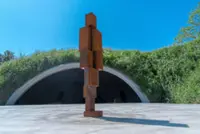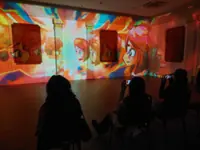A screenshot from Gan's 'The Koganecho Gesture' video essay at 'All the Time I Pray To Buddha, I Keep on Killing Mosquitoes' exhibition at PJPAC. Photo: Gan Siong King
Contemporary artist Gan Siong King’s All the Time I Pray To Buddha, I Keep on Killing Mosquitoes (ATIPB) is a video installation exhibition and a series of four dialogue sessions, set to open at the Petaling Jaya Performing Arts Centre (PJPAC), 1Utama shopping centre on Jan 19.
The video segment features two works - The Koganecho Gesture (TKG) and Citizen, with the latter first exhibited at The Koganecho Bazaar Vol.2 (KB2020) in Yokohama, Japan.
Already a subscriber? Log in
Save 30% OFF The Star Digital Access
Cancel anytime. Ad-free. Unlimited access with perks.





